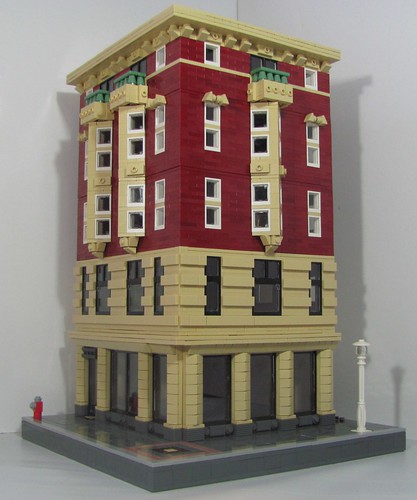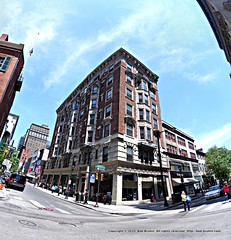
Nathaniel Brill has built one of those anonymous-urban buildings which all team up to create a downtown. But we're not here to talk about urban theory, dear reader. No, tonight's lecture is on Detail! In architecture parlance, details are all about connections, the condition when two differing materials meet. Details relates to LEGO on a whole number of levels (this is a hobby that is entirely about connecting pieces); tonight we discuss how Real World Detail (RD) translates to LEGO Detail (LD)
Nathaniel does a good job here, grabbing the right amount of RD to bring down to minifig scale. If you look at the super-high-rez source/reference pic, you'll see varying windows, some with decorative keystones, some with stone surrounds. He brings the keystones along, mixed with the entablatures to make a sort of LD pronounced keystone-thing. Those inwardly angled stone surrounds would be impossible to render without grossly oversizing the building. Also of note, the wrought-iron rails on the balconies are rather humorously bloated and squashed (just like a minifig!).
Well you've probably learned little-to-nothing, so let's cut to the Animaniacs-style Moral of the Story: when you are working on a LEGO model of a building/car/train/castle/spaceship, pay attention to how things are constructed in real life. This is the key difference between a MOC with walls of bricks and a MOC with brick walls.
Special note to spacers: greebles are not (necessarily) details. The way greebles are all-to-often used, they are more like ornamentation, a curse word as far as Modernity is concerned (pronounced Moe-dare-nitty for maximum pretension). As spaceships are generally Modern-ish in aesthetic (a debatable statement, perhaps worth a future posting!), this is decidedly out of place. It is the author's un-humble opinion that we could do with more details, less greebles.



No comments:
Post a Comment